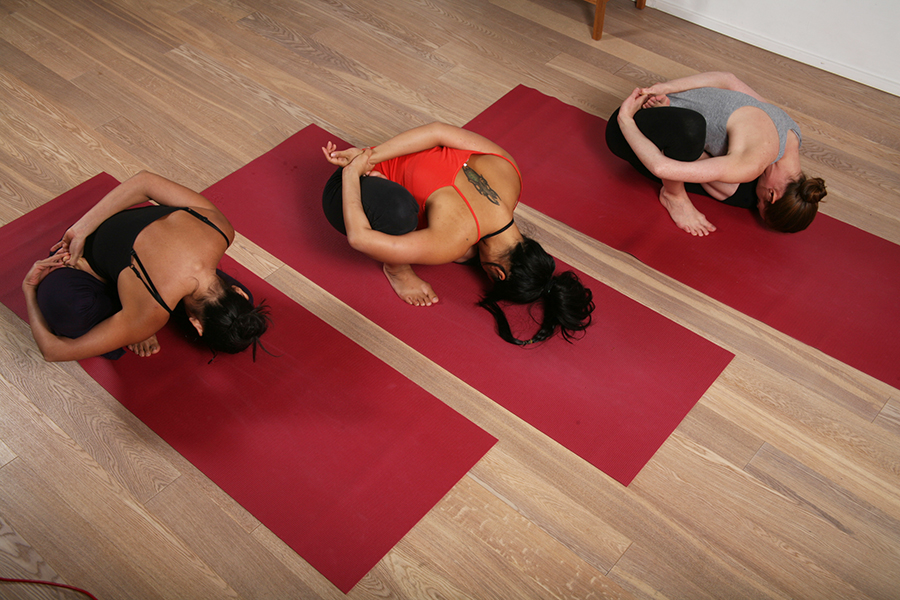
Constipation yoga can provide many benefits. Constipation yoga has many benefits. It helps to control the body's release of compounds. The majority of serotonin in the body is made in the stomach. By strengthening the parasympathetic nervous system, yoga can help balance the production of serotonin. This can help with constipation. You can get relief from constipation by a variety of methods.
The first yoga pose to cure constipation is the cat-cow asana. This position is extremely relaxing and can stimulate the digestive system as well as blood flow. The first step in this asana involves lying on your back and extending your legs. The next step is to extend your right knee outward. Your back will be rounded while your chin is on the ceiling. Repeat the same process for the other side.

Cobra Pose is third yoga pose to help constipation. Start by lying flat on one side with your feet pointed out. Your palms should be parallel to your shoulders. Your abdominal muscles, legs, and head should be engaged. Next, lift your head up and allow the twisting movement to massage your intestines. This pose is great for getting gas out and a good night's sleep.
The downward-facing puppy is another pose you can do to relieve constipation. This pose involves twisting your torso. Crescent Lunge Twist involves you holding a lunge and twisting the torso. The Cobra Pose allows for a simpler version that doesn't require any twisting. The Wind-Relieving Pose can also be very helpful. This requires that you press your hands into the chest and stretch your legs. However, it can relieve gas.
Another helpful yoga pose to help constipation is the Pawanmuktasana. This is also known as the Wind Relieving Pose. This is a great way for you to relax and soothe your intestines. By stretching your abdomen, this yoga pose can also improve your posture. It will improve your blood circulation and help you avoid constipation. This pose will make you more flexible.

Yogi Squat, another useful yoga pose for constipation, is also available. The same principles as the Squatty Potty are used here, but this pose is better at relieving constipation. It is a great method to increase the amount you drink which is important for your digestion. Yoga that is based on water intake will improve your ability to move and feel better. If you live a healthy lifestyle, it is less likely that constipation medication will be necessary.
Another good yoga pose to help constipation is The Corpse Pose. This is an upright posture that can stretch the hamstrings as well as the abdominal organs. It opens the chest and oxygenates all parts of the body. It is very helpful for people with indigestion. The best yoga pose for constipation is universal spinal twist. This pose will also help you to manage stress. So, if you suffer from chronic constipation, this yoga asana will be very beneficial for you.
FAQ
How can you improve your mental or emotional health?
-
Exercise - Physical activity improves brain function and increases energy levels.
-
Sleep - It is important to get enough rest in order to reduce stress and anxiety.
-
Nutrition - Eat healthy foods such fruits and veggies to keep your body strong, energized and happy.
-
Meditation - Meditation regularly can help reduce stress and anxiety.
-
Socialization - Spending time in the company of friends and family keeps us happy.
How can you tell if you are suffering from a mental illness or not?
Persons may be diagnosed with mental illness if they have symptoms that are disruptive to their daily life. The symptoms of mental illnesses can vary from one person to another. However, the most common symptoms include: feeling sad, anxious, angry, guilty, hopeless, lonely, depressed, confused, worthless, guilty, suicidal, etc.
A person may also be diagnosed with a mental disorder if they meet at least three out of four criteria listed below:
-
Troubled thoughts or feelings
-
Disturbed behavior
-
Disturbance of functioning
-
Inability to relate to others
Are mental health and work more important than mental health?
Mental health is extremely important for everyone, especially when we are working. You can relax if you are feeling stressed at work by going out with your friends, walking outside or listening to music.
If you find that you cannot relax, you should talk to your boss or supervisor. They may be able to suggest ways to relieve your stress.
You must also care for your physical well-being. It's important to eat right, exercise regularly, take enough rest, and get plenty of sleep.
What can I do to prevent mental health problems?
It's not always easy to prevent mental illness. Here are some tips:
-
Don't drink alcohol. Drinking alcohol can cause depression and affect your mood.
-
Avoid using drugs. Drugs can affect your brain chemistry and make you feel worse.
-
Get enough sleep. A lack of sleep can cause anxiety and depression.
-
Exercise regularly. Exercise releases endorphins which can make you happy.
-
Consume healthy food. You can feel tired and unmotivated if you eat junk food.
-
Spend quality time spending it with loved ones. It can be a great way to improve your mood.
-
Have fun. Have fun!
-
Take breaks from social media. Social media sites can make you feel lonely and isolated.
-
Be kind to yourself. Treat yourself nicely, even if you aren't feeling great.
-
Ask for help. Ask for help if you are having difficulty coping. Talking to your family member or friend can be very helpful.
-
It's okay to let go. Crying helps release tension and stress. It doesn't necessarily signify that something bad has happened.
-
Keep busy. Do something that you love.
-
It is important to maintain good hygiene. Poor hygiene can make you feel unkempt and unattractive.
-
Stay connected. Stay positive by connecting to others.
-
Learn how to relax. Meditation and yoga are two relaxation techniques that can help you deal with stress better.
-
Find meaning in what you do. Find meaning in your hobby or work can bring you fulfillment.
-
You should be focusing on the moment. Concentrate on the present moment and you won't be so worried about the distant future.
-
Set goals. Setting goals can motivate you to achieve them.
-
Do something kind for yourself. Being kind to yourself can help boost self-esteem.
-
Practice gratitude. Gratitude can help to appreciate all the blessings in your life.
-
Volunteer. Volunteering can be a fun way to make a difference and spend your time.
-
Give back. Giving back can make you feel satisfied.
-
Pay attention to warning signs. You should be aware of warning signs and reach out for assistance if you notice any changes.
Statistics
- More than 40 million adults in the United States have an anxiety disorder, but less than 37% of people seek mental health treatment for their symptoms. (talkspace.com)
- In any given year, an estimated 18.1% (43.6 million) of U.S. adults ages 18 years or older suffered from any mental illness, and 4.2% (9.8 million) (healthypeople.gov)
- Similarly, for positive mental health, there is likely to be substantial agreement about some typical components (e.g., resilience to stress) 6, and controversy about more atypical components (e.g., career consolidation). (ncbi.nlm.nih.gov)
- More than 50% will be diagnosed with a mental illness or disorder at some point in their lifetime.3 (cdc.gov)
- It does have some influence, but not nearly as much as we might think, so focusing less on attaining wealth will likely make you happier (Aknin, Norton, & Dunn, 2009); (positivepsychology.com)
External Links
How To
How to Care for Autism-Affected Children
Autism spectrum disorder (ASD) is a neurodevelopmental condition characterized by impairments in social communication and repetitive behaviors. ASD affects 1 in 50 people worldwide. However, there are no treatments.
The first signs typically appear around 18 months in infanthood. Most common symptoms include difficulty understanding emotions of others, lack eye contact, problems in language development, and difficulties learning new skills. These symptoms can sometimes lead to serious behavioral issues such as self-injury, aggression, anxiety, depression, and sleep disturbances.
There is currently no known cause for this disease, although researchers believe genetics play a role. ASD may be caused by factors like infection, stress, obesity, drugs, vaccines or alcohol. Some studies also suggest that certain viruses such as rubella and measles may increase the chance of developing ASD later in your life.
Early diagnosis and intervention are key to improving outcomes. Many families struggle with their child’s behavior after they turn 18. The severity of the symptoms and how much support is needed will determine the treatment options. However, research shows that therapies focused on improving social interaction and reducing problem behaviors can make a difference.